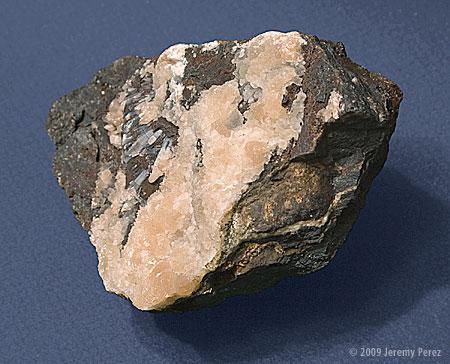
Click image for larger version.
This delicately detailed pair of stones seemed a bit out of place among all the other material at the mine dump. I couldn't leave them there. A quick scan in a couple field guides suggests Dendritic Pyrolusite. However, it appears that the true mineral identity of the dendrites requires some meticulous laboratory examination...which means I'll leave this identified generically for now.
Eric Graff has been providing a lot of helpful input on the specimens I've posted so far. He notes the following about this one:
Interesting rock! My first guess would be tenorite, CuO, (the only mineral listed from Iron Springs District that is noted for the formation of dendritic patterns).
From Mindat entry on tenorite: http://www.mindat.org/min-3912.html
Morphology:Paper-thin twinned aggregates and laths parallel {100} and elongated [011] (Vesuvius); striated [010] on {100}. Curved plates. Thin shining flexible scales. Stellate groups. Earthy, pulverulent.
Twinning:1. Common on {011}, producing dovetail reentrants and feather-like forms as senn on {100}; also stellate groups andcomplex dendritic patterns. 2. On {100} ?
My second guess would be iron oxide (hematite) as I've heard that can also form dendritic patterns. While manganese oxide does frequently form these types of structures, I don't see any manganese-bearing minerals from that district.
Eric
Thanks Eric!
I'm wondering about scraping some of it off and attempting a flame test on it...

Click image for larger version.

Click image for larger version.
| Mineral Type | Dendritic Condensations |
| Size | 21 x 7 x 8 cm, 8 x 7 x 3 cm |
| Collection ID | 09062105J, 09062106J |
| Collection Location | Near Comstock Mine, Iron Springs County, Utah, USA 37:36.874 N 113:23.576 W |
| Collection Date | June 21, 2009 |










